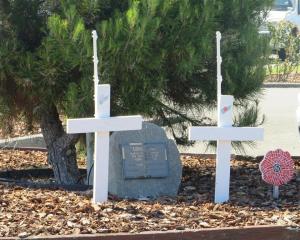

On Friday night, it was Kaikōura Primary School’s turn with 40 year 5/6 pupils and their families braving the cold for a star party.
"It is an amazing evening,’’ principal Hannah Simpson said.
"We are lucky to have these people coming into our school and hopefully it will inspire the students."
She said gaining dark sky status would be a major boost for the town.
"It will be so cool and all the tourism that goes with it will be great for the area."
Ms Simpson said the school would need to do some work with its school lighting, as the bright lights made it difficult to view the stars.
But the pupils and their parents enjoyed viewing the craters on the moon through the trust’s 8-inch telescope and getting some images from the Unistellar eVscope 2, she said.
Trust trustee Brian Horsfall said volunteers visited the school during the week to prepare the pupils for the star party.

Games and activities with a space theme were also on offer, along with two virtual reality headsets.
The children also learned at the Matariki star cluster and how it is viewed in different parts of the world.
The Kaikōura District Council adopted a private plan change from the trust earlier this year, which proposed new rules to strengthen lighting regulations.

But local residents will not have to change their light bulbs immediately.
Chief executive Will Doughty said 37 submissions were received and all were in support, meaning no hearing will be required.
The plan change will be reviewed by commissioners and is likely to be operative later this year.
In the meantime the trust is finalising its application for dark sky community status for the town and dark sky sanctuary status for the wider district.
If successful, it will join dark sky sanctuaries at Aotea Great Barrier Island and Rakiura Stewart Island, and four other dark sky sites, including the Oxford dark sky park, which was announced in January.
By David Hill, Local Democracy Reporter
■ LDR is local body journalism co-funded by RNZ and NZ On Air













